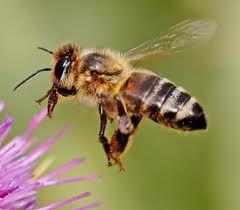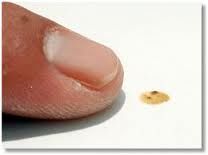Honey Bee
Bee Excrement
(All that glitters is not gold)
Bee pollen-sam (Bee bread, pollen or ambrosia) has been shown to contain 188 kinds of fungi and 29 kinds of bacteria.
The globs may be circular, oblong or linear, and are usually less than 0.5 -inch in length. Their shape seems to be dependent on the angle of impact and whether your vehicle is moving or stationary.
Pollen is the main source of food for most honey bees and their larvae, consisting of honey and pollens which are gathered by the worker bees. Like honey and Propolis, other well-known honey bee products, the exact chemical composition of pollen gathered depends on which plants the worker bees are gathering the pollen from.
Honeydew
The common honey bees (Apis mellifera) excrete minute gold / yellow globs while flying to or from their hives. These tiny, sticky globs differ from pollen grains (Micro gametophytes) which is a fine yellow or green powdered dust
Sometimes mistaken for tree resin is excreted by aphids or scale insects that infest the leaves and branches; these sometimes feel like they are in the clear coat, when in fact they have more than likely been covered with a wax or sealant.
Honey (honeydew) is not bee excrement nor is it bee vomit. A beeâs body contains a honey sac which is separate and apart from her stomach and intestines. A foraging bee collects nectar in her honey sac and brings it back to the hive for processing into honey. Her stomach and intestines are not involved in this procedure. The nectar that is collected contains approximately 80% water and enzymes. The house bees must then reduce the moisture content to approximately 18% to make honey.
[Sometimes a bee sees a better pollen sources and dumps what`s he`s carrying in mid-air to make room for the good stuff. Or they hit turbulence and jettison their load.] George Holeso, president of the Hawaii Beekeepers Association.
Removal - neglected deposits of honeydew will often serve a nutrient base for sooty mold growth; so residue should be removed as soon as possible. It can usually be removed by soaking with Isopropyl Alcohol (or Stonerâs Tarminator®) wet the area with the product by soaking a micro fibre towel (place `dots` of detailer`s clay on each corner of the towel) and allows it to remain on the surface for 3-5 minutes, then wipe with soft dry towel (replace removed paint protection)
Relevant Articles
1. âEnvironmental Damageâ - http://www.autopia.org/forum/car-det...l-damage.html#
Results 1 to 1 of 1
Thread: Removal of Bee Pollen Excrement
-
08-12-2012, 12:18 PM #1What gets overlooked too often is that one must be a student before becoming a teacher.
Thread Information
Users Browsing this Thread
There are currently 1 users browsing this thread. (0 members and 1 guests)
Similar Threads
-
Best product for quick pollen removal?
By CrazyPays in forum Car Detailing Product DiscussionReplies: 1Last Post: 03-31-2013, 05:34 AM -
Excrement Removal
By togwt in forum Autopia Detailing WikiReplies: 0Last Post: 05-30-2012, 05:46 AM -
Bird Excrement Removal
By togwt in forum Autopia Detailing WikiReplies: 0Last Post: 05-24-2012, 07:06 AM -
Stubborn excrement
By coupe70 in forum Auto Detailing 101Replies: 7Last Post: 08-11-2011, 07:28 AM -
Pollen Removal
By expectingrain in forum Car DetailingReplies: 2Last Post: 04-23-2007, 08:10 PM








 Reply With Quote
Reply With Quote
Bookmarks